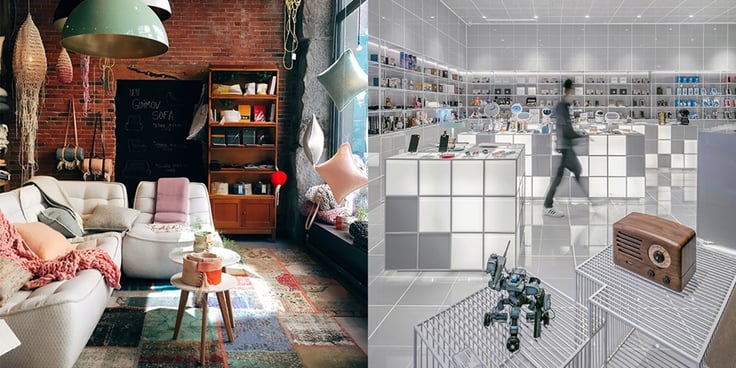Just because more and more stores are closing doesn’t necessarily mean we have to talk about the death of retail. Certain people argue that it's more a case of a retail renaissance that we are experiencing right now. Traditional stores are on their way out, but are leaving room for increasingly experience-based premises.
During the 2018 D-Congress in Gothenburg, the “new store” was a hot topic of conversation. The majority of people there agreed that bricks and mortar stores have gained an entirely new purpose with the forward march of e-commerce. New expectations from customers create new and higher demands on what a store should be today. According to a survey by Eventbrite the millennial generation puts far more value on experiences and events compared to earlier generations.
From showroom to experience stage
As actual purchases move more and more towards the digital world, bricks and mortar stores need to meet another need. They must offer customers something more than simply somewhere to buy products, and give visitors an experience of some kind. In these “new stores”, the focus must be on get-togethers and events rather than sales in the traditional sense.
“The buyer’s journey has changed very rapidly in the last few years. More and more purchases are being made online and traditional store sales are falling. To avoid withering on the vine, the retail sector must adopt an omnichannel approach and enable customers to roam freely between all channels,” says Åsa Lundborg Ling, head of marketing at e-commerce platform Litium.
Utilize and integrate more channels in the store experience
If bricks and mortar stores are to survive, they must become integrated with new channels in an innovative way. New technologies such as virtual reality, augmented reality and artificial intelligence can interweave an online store with the physical store space and create a much more interesting experience than before.
Virtual reality can give customers the opportunity to view products in the contexts they intend to put or use them, in both the physical and online stores. Augmented reality can give your customers the same opportunities in the bricks and mortar store as online when they come in to view products in different designs and colors. For example, with the aid of the camera in their smartphone, customers can see a physical product in any choice of color and configuration on site at the store.
Artificial intelligence is already being used to a certain degree in e-commerce today. Based on previous choices and purchases, customers can be given recommendations for things they may be interested in. The same can apply in a bricks and mortar store where a previous customer can get a message about an offer or a product when they are in the store.
New technology enables digital and physical channels to boost each other in order to create a more powerful experience for the customer. By making the bricks and mortar store a complement to e-commerce instead of an alternative, justification for the existence of both channels is created.
“Permit the physical and the digital to boost each other. Take advantage of the fact that your customers move back and forth between different channels and offer them the best that each channel can give them in the form of experiences and product presentation,” Lundborg Ling says.
The future for bricks and mortar stores is not necessarily all doom and gloom
Even if prospects for bricks and mortar stores look bleak with closed and shuttered stores, there is light at the end of the tunnel. A physical location to showcase your products can still create added value for consumers. All it will take is to view store space as a complement to an online store and vice versa.
